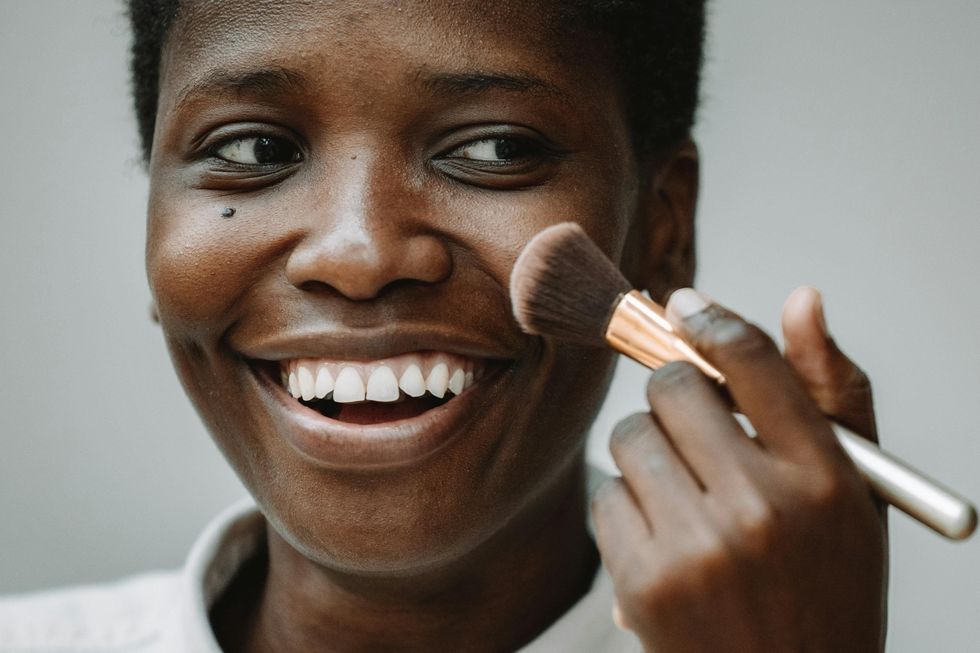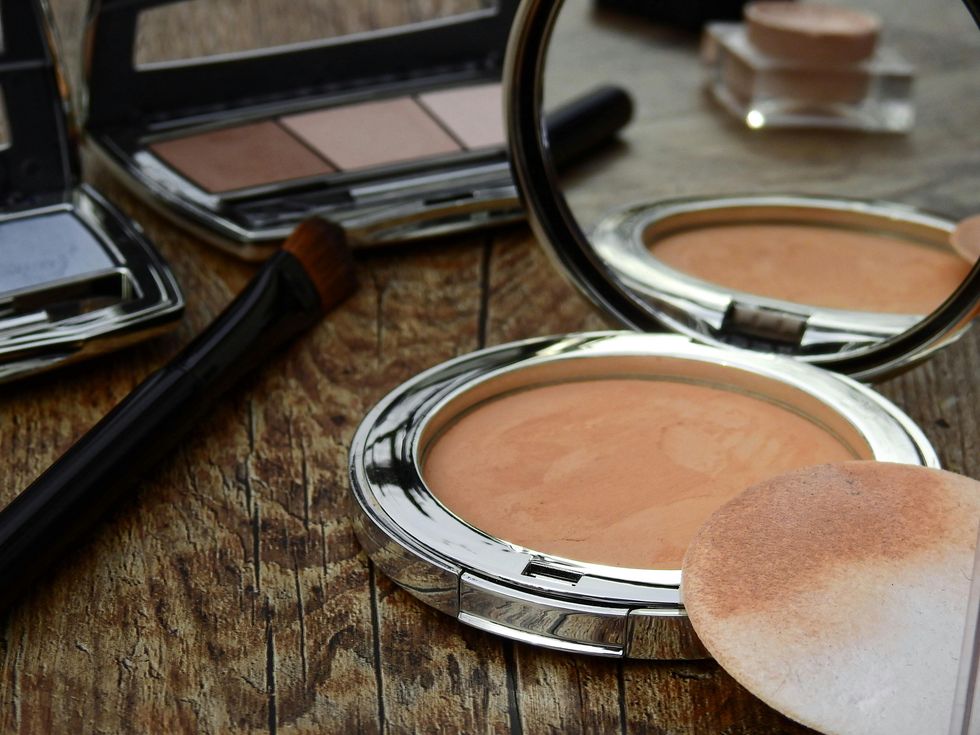Have you ever worn foundation, looked in the mirror, and noticed your skin has a 'grey cast'? Well, scientists might have a solution.
The majority of makeup brands have finally woken up and are offering complexion products for consumers for darker skin tones, largely due to brands such as Fenty for championing inclusion. Before Rihanna's brand launched in 2017, makeup lovers with darker skin tones didn’t have much choice when finding foundations.
And despite leaps of progress in recent years, with the introduction of foundation ranges with 20+ options, there is still a lot of work to be done - particularly when undertones are taken into account.
One significant issue that still persists involves the ever-prominent 'grey cast'. As the name suggests, it's a grey-ish hue left on the skin that some makeup wearers with darker skin tones may notice.
“There’s nothing more heartbreaking than applying a foundation and seeing a grey face staring back at you,” says makeup wearer Ayesha Thomas, 26, from London. “There are a lot more options out there now, but sometimes a shade just looks off.”
In order to improve everyone’s beat, researchers say they have uncovered a way to create redder tones in makeup for darker skin - and the solution is thanks to the addition of ultramarine blue.

The colour is a deep and vibrant blue pigment that has been used in art for centuries and is today commonly known for its usage in both fine art and design.
Gabriella Baki, associate professor of pharmaceutics at the University of Toledo, said that although some companies already use the additive in their products, its usage is still far from being widespread.
The ashy complexion could be due to the products typically containing bigger quantities of black iron oxide, the research team said.
“Unfortunately, when it comes to creating foundations for dark skin colours, those combinations often produce more of a grey color than a natural brown skin colour,” said Baki, an associate professor of pharmaceutics and director of UToledo’s undergraduate Cosmetic Science and Formulation Design program. “It’s difficult to get a good, natural colour when the foundation is rubbed out on the skin.”
Baki explained that adding ultramarine blue creates a colour which is less opaque, helping reduce what is known as the “grey cast”.
“Ultramarine blue creates redder and yellower hues, which is different from black iron oxide,” said Baki per The Guardian. “By creating warmer hues, the foundation looks more skin-like. Additionally, ultramarine blue has a lower refractive index than black iron oxide.”

The team behind the study examined the impact of including ultramarine blue by creating 20 powder foundations and 18 stick foundations (one of the trendiest formats for the products right now) in both darker and lighter shades.
Researchers analysed the colour of the powders using a spectrophotometer, an instrument used to measure the intensity of light at different wavelengths. They also assessed them visually, both on specialised paper and when applied to the inner forearms of participants.
Ultramarine blue helps in both darker and lighter foundations. This allows for the creation of different undertones and can be transformative for darker skin tones by getting rid of the grey cast.
“Based on our research, we recommend combining black iron oxide and ultramarine blue. However, ultramarine blue can be used alone as a dark pigment as well,” Baki said. “It depends on what skin tone and undertone needs to be achieved with the foundation.
“For very dark skin colour, ultramarine blue may not be enough to match consumers’ skin tone value, as it creates lighter foundations when compared to black iron oxide at the same percentage. If a dark colour needs to be created, combining black and blue can provide a more skin-like colour than black iron oxide alone.”
The research, which will be presented at the spring meeting of the American Chemical Society (ACS), is another fabulous reminder of how science and makeup go hand-in-hand.
“We hope that our research provides new insights into why it should be added,” Baki said.
You should also read:
What is the Project Pan beauty trend on TikTok?
Everyone’s sharing their unbelievable before vs afters of using Korean skincare - here’s what to buy
How to join the indy100's free WhatsApp channel
Sign up for our free Indy100 weekly newsletter
Have your say in our news democracy. Click the upvote icon at the top of the page to help raise this article through the indy100 rankings.














